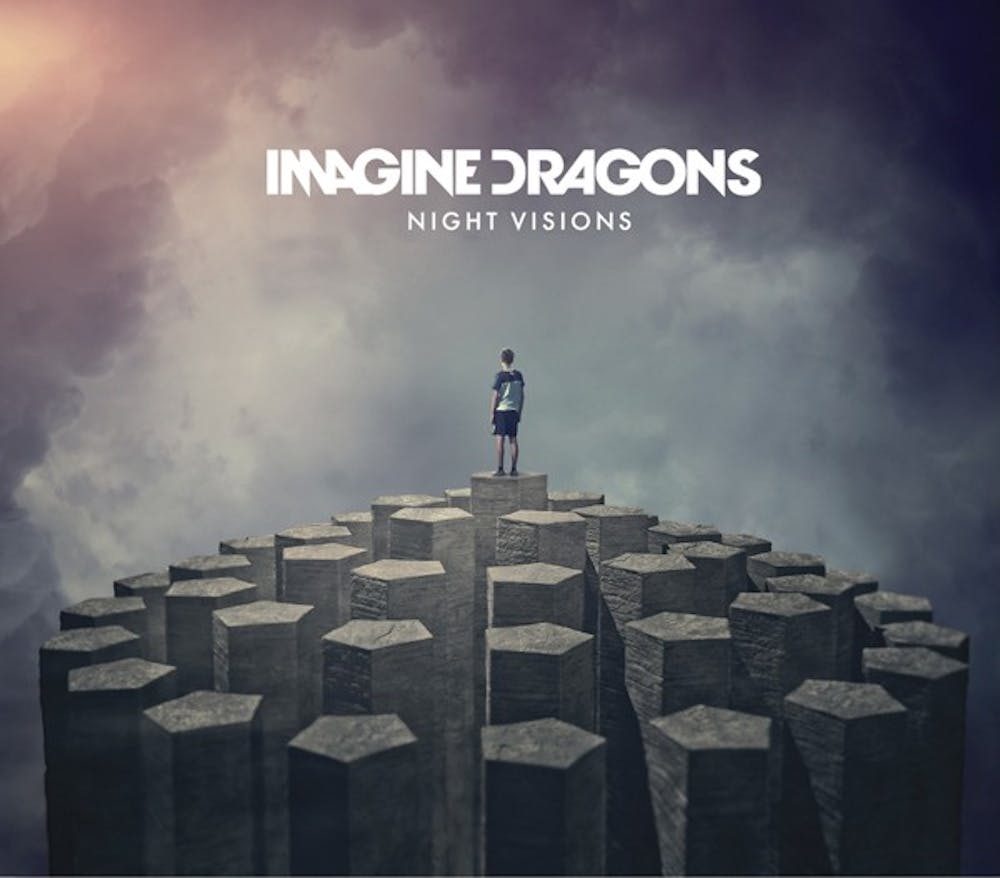Imagine Dragons finally released their debut album, “Night Visions,” to the wild anticipation of fans Tuesday. The album even includes the top 4 songs from the EP. However, it waffles between noteworthy creation and popularized failure.
A caramel Granny Smith apple can be delectable because it has the perfect blend of acidic tang and creamy, sugar relief. On the other hand, a red apple that has been dunked in a vat of honey, molasses and syrup, rolled over crumbled chocolate cookies and served with a dollop of rocky road ice cream is neither appealing nor healthy because of its excessive sugar. “Night Visions” as a whole is the red apple, made cheap by the band’s excessive efforts to be catchy, epic, refined and attractive.
The album begins with the song “Radioactive.” This headline song introduces the template that almost every other song on “Night Visions” uses — there is a quaint, homey introduction with stringed instruments and choral harmonies followed by dubstep-like electricity. Lead singer Dan Reynolds takes a stab at emotion by raising his voice alongside the synthesized instrumentation as he sings about using past difficulties (chemicals) to become stronger (radioactive).
By no means is Reynolds a bad vocalist. He sounds quite nice when he sings calmly as he does in the introduction to “Demons” and “Every Night.” When he raises his voice, however, he sounds less interesting.
The inevitable weakness caused by the band’s energetic style is its questionable authenticity. Because its songs are so upbeat, the positive lyrics feel over-the-top optimistic. Conversely, negative lyrics — odes about pain, loss, regret — can hardly be taken seriously and don’t really appear much on the album. For this reason, “Night Visions” becomes linear, lacks balance, cohesion and, worst of all, adopts a Disney-like quality.
There are two moments in the album that offer hope for something new and fresh apart from the predictable mold: “Underdog” and the album finale “Nothing Left to Say/Rocks.” The former uses electronic sounds in a way that Neon Indian or STRFKR might, and for this reason it is one of the more creative tracks. As for the nine-minute album finale, it is divided into two songs by a gap in the middle akin to the songs in Coldplay’s Viva la Vida. The second part of the song, “Rocks,” sounds like a promising Fleet Foxes song until Imagine Dragons once again flips the radio appeal lever up and transforms the tune into another bunch of processed brownie bits.
Imagine Dragons will become more popular. Although the original four songs are arguably still the better songs on the album, the likely new hit is “Bleeding Out,” which has all the makings for a chart-topping single with its flashy beats and mechanical atmosphere. It also explores a darker side — a nice change of pace. The band deserves the attention it gets, even if it’s clear that it composed its new music to appeal to mainstream music tastes.
Students who attended the ASU football game against NAU last week may recall that the song “Radioactive” was pumped through Sun Devil Stadium. It is always unfortunate to pigeonhole a band, but it is this anthem style that Imagine Dragons should be known for, and not much else.
There is no shame in enjoying “Night Visions.” Viewed as a collection of singles, the album fares well, for the songs on their own are fun to listen to. But it would be a mistake to say that as a comprehensive album, “Night Visions” stands out from other complete, balanced projects.
Reach the reporter at jconigli@asu.edu





